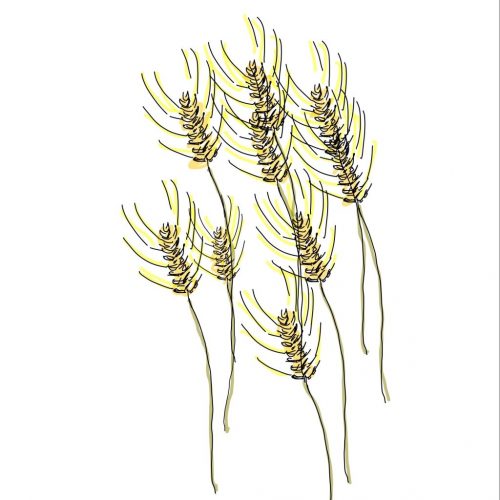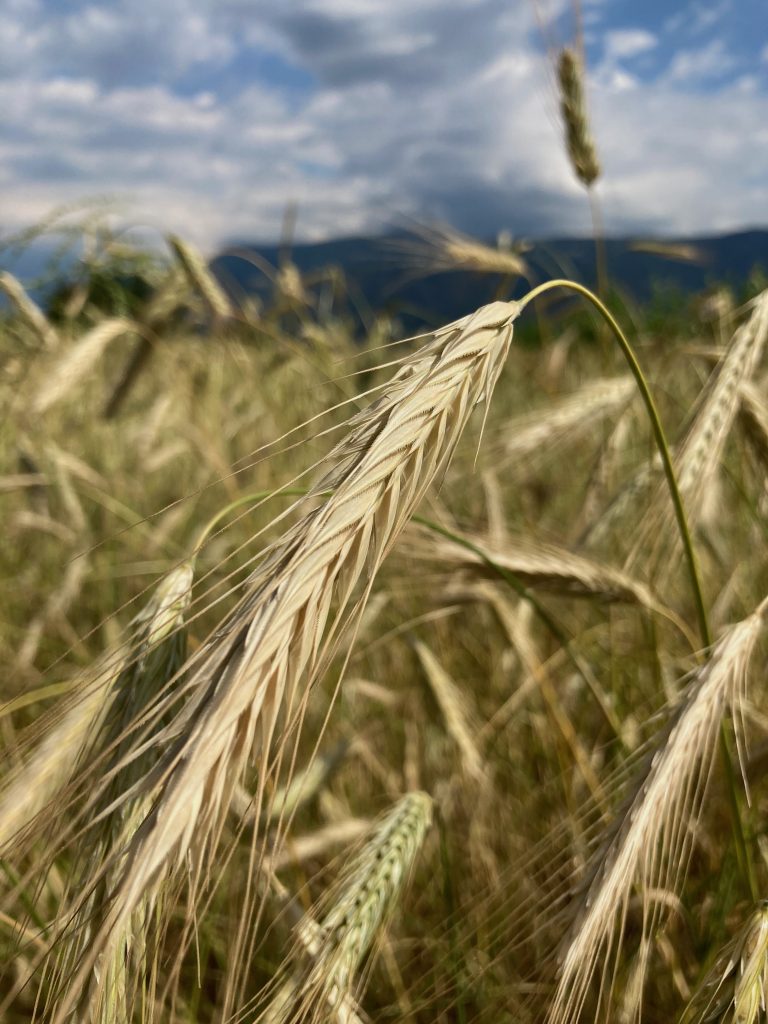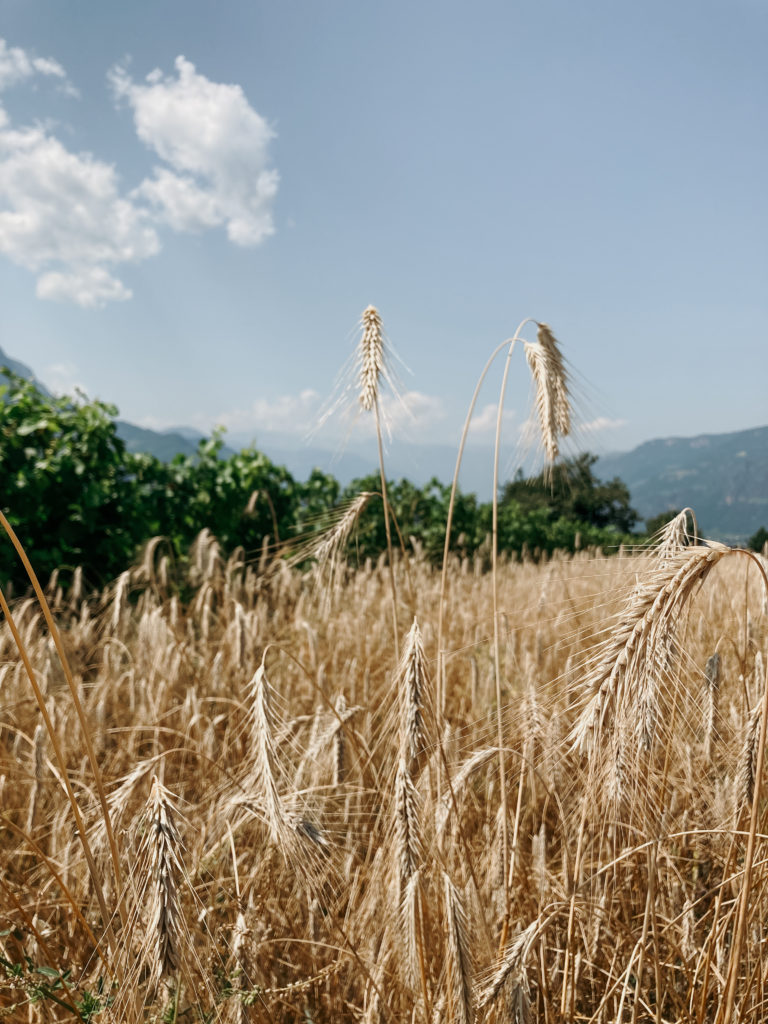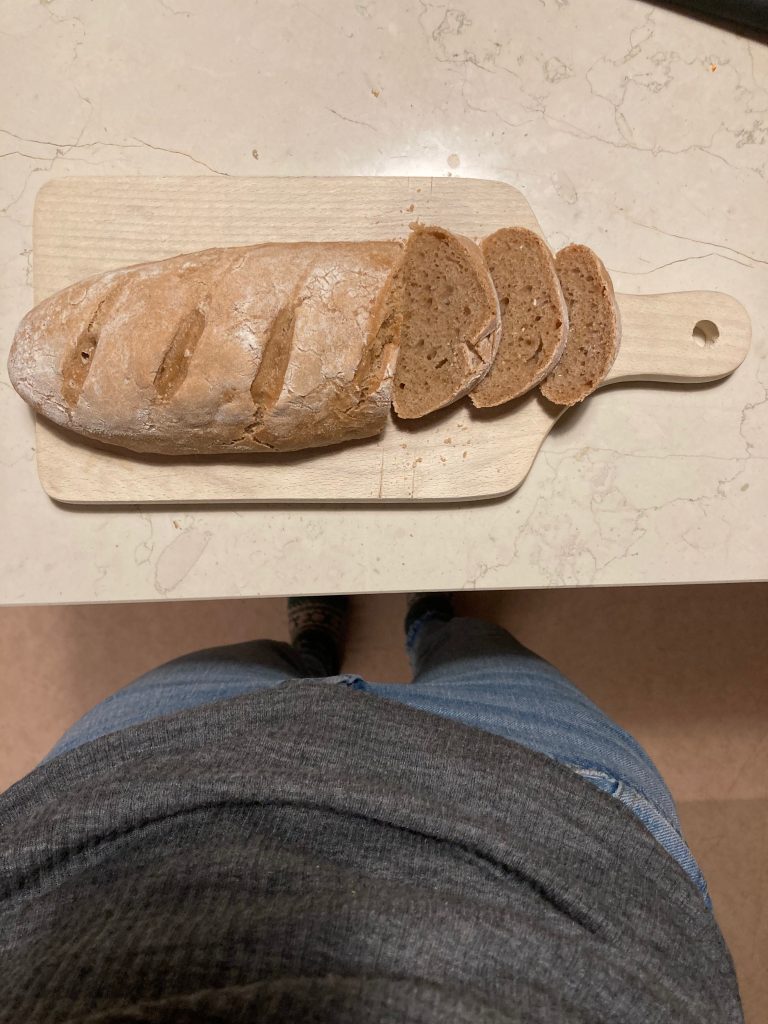

My dad tells me that until late into the 20th century, intensive viticulture as we know it today was non existent in Alto Adige. Farmers used to practice livestock farming alongside growing apples and grapes. Grass was growing between the rows and the vine stocks, which fed the oxen, cows, goats, and sheep. Farmers also cultivated potatoes, oats, beets, and other plants in their vineyards, which they used for self-supply. Tractors have been used only for around 50 years; before, oxen and horses were used as draft animals and for soil cultivation. Their manure was mixed with straw and used for fertilization.
Overall, it was an extensive, fine-tuned, gentle and sustainable recycling economy.

The world got much more complex in the meantime, and economical success is an important parameter of our time. Because changing the bigger systems is a giant challenge, doing small steps in the right direction seems the best option to me.
Usually, vineyards get eradicated in late fall, before the soil starts to freeze, and get replanted in spring. In 2019, instead of replanting one of our vineyard fields, we decided to let the soil rest for a year, to just leave it fallow. The following year, we seeded a very old wheat variety in spring, which grew perfectly well and turned out as the most beautiful cornfield in summer.
As growing up on a wine farm, I was used to some kind agricultural machines, but I was really impressed by the work done by a small Combine harvester (Mähdrescher; mietitrebbiatrice) we had rented to harvest the cereals. I know it might be normal for other farmers, but I felt like a five-year-old knowing that those grains we harvest will become flour and bread, eventually.
After harvest, cereals were cleaned and sorted, before they were dried for some weeks. Only then, it was possible to grind them to flour. We kept some grains aside to use them as cover crops for the following year.



Baking, especially baking bread, got incredibly popular in the last years, even catalyzed by the “staying at home”-lifestyle we had to practice for months.
So, we started to bake bread too. Many different breads. My mum tried countless different kinds, while I hold on to the classics. French baguettes for example. Or Vinschgerlen, which tasted incredible with some Speck…
The conventional, “white” flour we know today is the result of many breeding steps. Unfortunately, that meant loosing nutritional elements, but also loosing a wide range of flavors.
In our case, even the finest grinding resulted in some sort of whole meal flour, which made the breads more rustic, maybe not that tender, but full of unknown, interesting flavors.



Growing cereals is really cool. And even more I like baking bread: I love watching the dough grow bigger and bigger, forming the loafs and especially, I adore the smell of freshly baked bread…
Cornfields will become a constant on our farm. I am sure.
Which type of cereal?
We started with wheat as summer crop, followed by grano saraceno in fall. The following year we planted rhy in spring/summer and white mustard (Sinapis alba L.) in fall.